How I Would Start Pencil Sketching Still Life If I Were a Beginner Again
- PINKI
- Jun 18, 2025
- 13 min read
Updated: Jul 8, 2025
From Beginner to Pro: A Step-by-Step Roadmap to Mastering Still Life Pencil Sketching
When I first made the decision to become an artist, I didn’t have fancy tools, mentors, or an art school to guide me. I was a self-taught beginner, full of curiosity, but with no clear path. If you're standing at that same starting point today, wondering how to begin pencil sketching — especially still life — this guide is for you.
When I first decided to become an artist, I taught myself everything from scratch. I was completely self-taught. I didn’t come from an art background, and I didn’t know where to begin. But I knew one thing: if I stayed consistent and committed, I could teach myself. I didn’t focus on what I had done wrong or right — that’s a story for another time. Instead, I focused on what I should be doing to truly learn the art of drawing.
If I had to start all over again, here is the step-by-step process I would follow to learn pencil sketching, especially focusing on still life. This is a structured roadmap for beginners who wish to eventually become professional still-life pencil sketch artists. I am sharing the path I would take (and did take) if I were starting again — and I promise, it works.
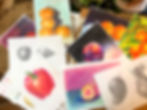
Why Start with Still Life? (Q&A)
Before we dive into techniques and practice routines, it's important to understand why we start our artistic journey with still life drawing—especially using pencil.
Still life might seem simple, but it’s one of the most powerful exercises in art. It teaches you how to observe like an artist, understand basic drawing concepts, study how light and shadow behave, and build the foundation of realistic art—without needing any formal training or art school. This practice sharpens your skills, improves composition sense, and helps you grow into a confident, professional artist over time. Below are some frequently asked questions to help you understand how learning still life benefits your art career and personal growth.
Q: Why should I begin my art journey with still life drawing?
A: Still life is the perfect starting point because it allows you to focus on the fundamentals without the complexity of moving subjects or anatomy. You're learning how to observe, measure, and understand form, light, and shadow—all with objects that don’t move.
Q: How does still life drawing with pencil help me understand the basics?
A: It helps you study shape, proportion, perspective, and lighting in a controlled environment. You're able to repeat exercises with the same subjects, improving your accuracy and visual memory.
Q: How will this help me in my career as an artist?
A: Whether you go into illustration, painting, design, or fine art, still life trains you to see like a professional. It builds the core skills that every successful artist depends on—like rendering realism, creating compositions, and mastering tones.
Q: I never went to art school. Will still life help me become a professional?A: Absolutely. Many self-taught artists have built careers by mastering fundamentals through still life. It teaches discipline, sharpens your eye, and allows you to develop a personal style over time.
Q: Why is learning still life so helpful?
A: Still life gives you full control: you choose the objects, lighting, and layout. This teaches you decision-making in art, an essential part of developing your own visual language.
Q: How exactly does it help?
A: It improves your understanding of volume, light direction, cast shadows, material textures, spatial relationships, and even storytelling through objects.
Q: Who should learn still life?
A: Anyone serious about improving their drawing skills—whether you're a beginner, a hobbyist, or an aspiring professional. It’s especially useful if you're self-taught or planning to build a portfolio.
Q: Is it really that important?
A: Yes. Still life is not just a beginner exercise—it’s a long-term practice. Even advanced artists return to it to refine their skills, explore new compositions, and stay grounded in the basics.
Let me walk you through what I would teach myself if I were starting over today, and how you can build a strong foundation with just a pencil and paper.
Step 1: Observation Skills – Learning to See Like an Artist
Before you even pick up a pencil, it's crucial to train your eyes. Observation is the first step toward drawing realistically. Spend time each day closely looking at objects around you — a mug, a spoon, a plant, or even your hand. Notice how light hits the object, how shadows fall, and what kind of surface textures you see. Developing this ability to “see” like an artist will dramatically improve how you draw. Start a visual journal where you record sketches and write down what you observe. This builds visual memory, sharpens focus, and lays a strong foundation for all future drawing skills.
TIP: Before drawing anything, train your eyes.
Spend time looking at everyday objects.
Observe shapes, light, texture, space, and how shadows fall.
Practice quick “sight drawings” – 1 to 2-minute sketches from observation.
Begin keeping an art journal where you note what you observe about objects daily.
🎯 Goal: Build the habit of “drawing with your eyes” before the pencil touches paper.
Step 2: Line Confidence and Control
The next step is mastering the most essential drawing skill — line work. When you're beginning, your lines may feel shaky or hesitant. That’s okay. With regular practice, you’ll gain more control. Start with basic exercises like drawing straight lines, circles, ellipses, and waves across a page. Use different pressures to create light and dark lines. Practicing contour drawing (the outline of an object) helps train your hand-eye coordination. These foundational drills will prepare your hand to draw more confidently and fluidly, which is essential when sketching from life.
TIP: Master the most basic tool of all — your line.
Use a single pencil (HB or 2B).
Practice straight lines, circles, ellipses, curves, and parallel lines.
Avoid scratchy lines — train for light, confident strokes.
Learn contour drawing – tracing the outer edge of objects smoothly.
🎯 Goal: Create neat, confident outlines without any shading.
"Need help staying consistent with your sketching practice?”
Get my 30-Day Still Life Sketching Prompt Calendar + Tip Sheet to build a daily drawing habit and improve faster.

Step 3: Mastering Basic Shapes & Forms
Everything you want to draw — from a teacup to a vase — is based on a few basic forms: the cube, sphere, cylinder, and cone. Begin by practicing these shapes repeatedly. Observe how these forms appear from different angles. Use them to construct more complex objects. For example, a mug is essentially a cylinder with a curved handle. Once you understand how light behaves on these forms, you can start seeing and drawing real-life objects more accurately. This step helps you break down the visual complexity of the world into manageable parts.
TIP: Everything can be broken down into shapes.
Practice drawing:
Cube
Sphere
Cylinder
Cone
Study how light interacts with each form.
Practice turning shapes into 3D with shading later (but just outlines for now).
🎯 Goal: Understand how real-world objects are built from simple shapes.
“Feeling stuck or overwhelmed with where to start?”
Get my Still Life Roadmap – a visual learning path that breaks down everything step-by-step so you can improve with clarity and direction.
Step 4: Still Life Outlines – No Shading Yet
Once you’re comfortable with shapes, move on to drawing simple still-life compositions using only outlines. Choose 3–5 basic objects like a cup, a spoon, a fruit, or a piece of cloth. Arrange them on a table and start sketching their outlines with light pencil strokes. Don’t worry about shading or details. This step is about getting proportions, angles, and spatial relationships right. Focus on the spacing between objects and how they overlap. This is a great way to train your sense of proportion and layout without being distracted by tonal values.
TIP: Begin with real objects around you.
Draw 3-5 simple objects: cups, fruits, folded paper, bowls, spoons.
Focus on shape accuracy and proportion.
Use light outlines only – avoid shading for now.
Practice overlapping objects to understand depth.
🎯 Goal: Confidently draw still-life setups using only outlines.
“Want to skip the guesswork and watch only the best videos to learn still life?”
I’ve curated a list of the 15 most useful YouTube tutorials that helped me as a beginner.

Step 5: Perspective Fundamentals
Perspective helps you represent three-dimensional space on a two-dimensional surface. Begin by understanding the horizon line, eye level, and vanishing points. Practice drawing boxes and cylinders in 1-point and 2-point perspective. Then apply these principles to your still life scenes. Notice how the bottom of a mug or the opening of a bowl changes based on your viewpoint. This step helps you anchor your drawings in space, making them more realistic and believable.
TIP: Add a sense of space to your drawings.
Study horizon lines, vanishing points, and eye level.
Practice:
1-point perspective (objects facing you)
2-point perspective (objects at an angle)
Apply perspective when arranging objects on a table.
🎯 Goal: Make objects feel grounded in space and correctly sized.
Step 6: Composition and Object Arrangement
Composition is the silent language of art. It determines how your viewer’s eyes move through the artwork. Experiment with object placement — should the tall bottle go in the center or the side? Try the Rule of Thirds: imagine your paper divided into thirds both horizontally and vertically, and place key elements at intersections. Use overlapping objects and varied sizes to create depth. Think of your drawing as a quiet story told through arrangement. A well-composed still-life feels harmonious and invites the viewer in.
TIP: Learn how to arrange your drawing for visual appeal.
Study balance, symmetry, and asymmetry in object placement.
Learn the rules of thirds, diagonals, and framing.
Arrange 3 objects into a pleasing still-life composition and sketch it.
Try different viewpoints: top, side, close-up, far away.
🎯 Goal: Create still-life scenes that are pleasing and tell a quiet story.
“No more blank page fear!”
This printable prompt calendar gives you something to draw every day + tips that actually make your sketching better.
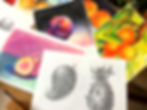
Step 7: Basic Pencil Sketching Techniques
Now that your outlines and compositions are solid, it’s time to learn shading. Begin with the four essential techniques: hatching (parallel lines), cross-hatching (intersecting lines), stippling (dots), and blending (smooth transitions). Try each with different pencil grades — HB, 2B, 4B, 6B — and observe the tonal variations. Practice pressure control: gentle strokes for light tones, firm strokes for darks. These exercises will build your tonal vocabulary, giving you the ability to render shadows, forms, and depth with subtlety.
TIP: Time to learn how to shade.
Practice:
Hatching
Cross-hatching
Stippling
Blending
Understand how to control pressure to create light and dark tones.
Learn how to shade from light to dark gradually.
🎯 Goal: Understand tone control and develop a toolbox of shading methods.
“If you're self-taught, you need structure.”
I created this beginner-friendly still life learning roadmap to guide your journey week by week.
Step 8: Light and Shadow Theory
Understanding how light works is key to realism. Study how a light source affects an object. Identify the highlight (brightest part), mid-tones (normal light), core shadow (deepest shadow on the object), reflected light (light bouncing back into the shadow), and cast shadow (shadow the object casts on a surface). Set up a sphere or apple under a lamp and practice shading it with all these elements. Understanding these principles lets you draw objects with convincing volume and depth.
TIP: Understand the science behind realistic shading.
Study:
Light Source – Direction and intensity
Highlight – Lightest part
Midtone – Area receiving light but not brightest
Core Shadow – The darkest part of the object
Reflected Light – Light bouncing into the shadow side
Cast Shadow – Shadow cast by the object onto the surface
Practice shading a sphere, cube, and cylinder with all light elements.
🎯 Goal: Develop believable shading that adds realism.
“Save time and learn smarter.”
Get my free PDF guide with handpicked YouTube links to learn everything from basic shapes to realistic shading – perfect for self-taught artists.

Step 9: Draw a Simple 3-Item Still Life
Combine your skills so far and attempt a complete small drawing. Choose three objects — maybe a fruit, a mug, and a spoon — and set them under a single light source. Start with a clean outline. Observe how light hits each object and where shadows fall. Slowly build up shading, starting from mid-tones and gradually deepening the shadows. Pay attention to texture, volume, and cast shadows. Take your time and focus on accuracy and subtle transitions. This is your first complete shaded still-life sketch.
TIP: Bring together your knowledge.
Choose 3 objects with simple textures (fruit, mug, napkin).
Set them under one strong light source.
Do a full drawing:
Outlines
Shading
Shadows and highlights
🎯 Goal: Apply form, light, and composition in a small complete drawing.
Step 10: Create a Detailed 5-Item Still Life Drawing
Now it's time to level up. Select five diverse objects — a shiny metal spoon, a soft cloth, a ripe fruit, a ceramic mug, and a glass jar. These different materials will challenge your shading skills. Begin with a clear and accurate outline. Then map the light source and identify key shadows and highlights. Work slowly and in layers. Add texture where needed — the fuzzy skin of a peach, the reflection on the glass, the folds in cloth. Use erasers for highlights and soft blending tools for smooth transitions. This project will push your abilities and help you think like a professional artist.
TIP: Challenge yourself with complexity.
Choose objects with different materials (glass, fruit, metal, fabric).
Study and replicate their textures.
Pay close attention to reflections, folds, edges, and overlapping shapes.
Draw step-by-step:
Outline with a light pencil
Add basic shadows
Build layers slowly
Use erasers to lift highlights
Deepen darks last
🎯 Goal: Make a fully rendered still-life drawing with depth and detail.
“Want a daily structure for your still life practice?”
Try my free 30-day prompt plan with beginner-friendly still life ideas + a tip sheet for shading, setup, and more.
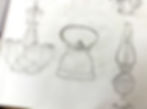
Step 11: Advanced Graphite Techniques
To truly refine your pencil work, start using advanced tools and techniques. Upgrade to a full range of graphite pencils from 2H to 8B. Use blending stumps, tissue, kneaded erasers, and soft brushes for detailed rendering. Learn to create sharp and soft edges deliberately. Try drawing transparent objects like glass, reflective surfaces like metal, and soft textures like fabric. Focus on value range — deep blacks to subtle grays. The ability to render different textures and tones separates good sketches from masterful ones.
TIP: To reach a professional level:
Use a full range of pencils: 2H to 8B
Learn to use tools like:
Tortillons/blending stumps
Kneaded erasers
Bristle brushes for smooth blending
Fixative sprays
Study edge control – sharp vs soft edges
Learn realistic texture rendering (glass, cloth, wood, ceramic, fruit skin)
🎯 Goal: Gain mastery over every detail and tool in pencil sketching.
“Want to become a confident pencil artist?”
Follow my still life drawing roadmap – the same one I use to teach myself foundational skills.

Step 12: Build a Still Life Portfolio
Finally, start developing your own series of still-life drawings. Think about themes — "Morning Breakfast Table", "Rustic Kitchen", or "Memories in a Bowl". Create 5–10 full-fledged drawings that tell a story or convey a mood. Document your process: take photos, note lighting, and reflect on challenges. Over time, you’ll not only refine your technique but also develop your artistic voice. Share your work online, seek feedback, and keep improving. A thoughtful portfolio shows your growth and skill to potential clients or galleries.
TIP: Now it’s time to create a personal body of work.
Develop 5–10 unique still-life artworks
Try series: "Tea Time Objects", "Kitchen Table Mornings", "Old & Forgotten"
Explore mood, storytelling, and lighting variations
Keep experimenting with compositions, viewpoints, and object combinations
🎯 Goal: Build a personal, professional still-life portfolio with your own voice and style.
“Don’t waste hours scrolling – just start drawing.”
I’ve already done the work of finding the best tutorials so you can focus on practicing.
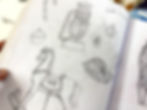
Final Thoughts
Learning still-life pencil sketching is like learning a language. You begin with alphabets — lines and shapes — then progress to grammar — shading and form — and finally, you start writing visual poetry. Each step is essential. Each sketch is a teacher. Embrace mistakes, be patient with your progress, and stay consistent. With this roadmap, you’re not just learning to draw — you’re learning to see, to feel, and to express. Every pencil stroke brings you closer to the professional artist within you.
Make Your Journey Your Reward
Becoming a professional still-life artist doesn’t happen overnight — but every pencil stroke takes you closer.
Remember:
Draw daily, even 15 minutes helps.
Reflect on your progress.
Don’t be afraid to restart or make mistakes.
Fall in love with observation, not just the outcome.
Your eye and hand grow together. Stay consistent, and soon, you’ll not only draw still life — you’ll breathe life into stillness.
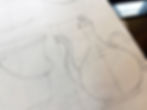
🎁 FREE Art Resources to Kickstart Your Still Life Drawing Journey
Made for Self-Taught Artists by Bottle Brush Art
If you're learning art on your own and want to build a strong foundation, you're in the right place! I’ve created 3 free downloadable resources to help you grow your skills, stay consistent, and feel confident with your pencil sketching practice.
Whether you're starting from scratch or refreshing your basics, these guides will walk you through still life drawing step by step.
Top YouTube Tutorials for Pencil Still Life Drawing (PDF Guide)
🎯 The only playlist you’ll need to get started with still life!
I’ve curated 15 of the best YouTube tutorials that actually teach you how to draw still life the right way — from shapes and outlines to shadows and highlights. No endless searching, no confusing info — just practical, clear, and beginner-friendly videos you can trust.
Great for complete beginners
Covers basics, composition, shading & more
Perfect to follow week-by-week
Still Life Roadmap for Self-Taught Artists (PDF Map)
🗺️ Not sure where to start or what to learn first? This roadmap has you covered!
This visual learning path breaks down the entire still life drawing process into simple weekly goals. From outlines to shadows, from understanding light to final compositions — this is your personal mini-course, in one single page.
Clear, structured path to follow
Ideal for self-paced learners
Helps you avoid overwhelm and stay focused
30-Day Prompt Calendar + Sketching Tip Sheet by Bottle Brush Art
🗓️ Build consistency with guided daily practice — even if you only have 15 minutes a day!
This free printable includes 30 sketching prompts arranged week by week based on what you’re learning: shapes, composition, shadows, and final drawings. Plus, I’ve added a bonus tip sheet full of tried-and-tested advice from my own sketching practice.
Easy daily goals to build a sketching habit
Includes beginner-friendly practice tips
Use it with your sketchbook or digital drawing
💬 Why I Created These
As a self-taught artist, I know how overwhelming it can be to figure everything out alone. These resources are designed to give you clarity, structure, and confidence—without needing an art degree or expensive tools.
📌 Save this page, print your guides, and let’s grow together—one pencil line at a time.
📬 Get More Freebies + Studio Notes
Love these downloads? Subscribe to my Bottle Brush Art Newsletter and get:
Free reference photos every month
Sketchbook prompts
My favorite tools + tutorials
Behind-the-scenes from my studio
Click on "BUY NOW" to get all these for free
Still Life Roadmap for Self-Taught Artists
Buy Now
30-Day Prompt Calendar + Sketching Tip Sheet
Buy Now
Top YouTube Tutorials for Pencil Still Life Drawing (PDF Guide)
Buy Now























